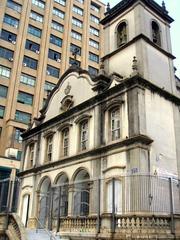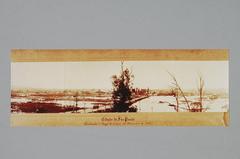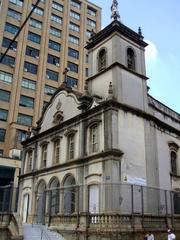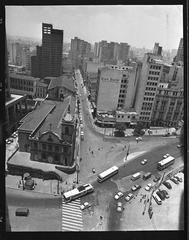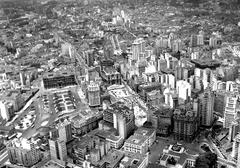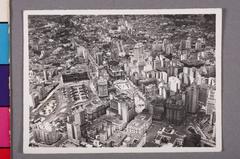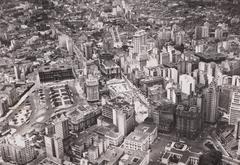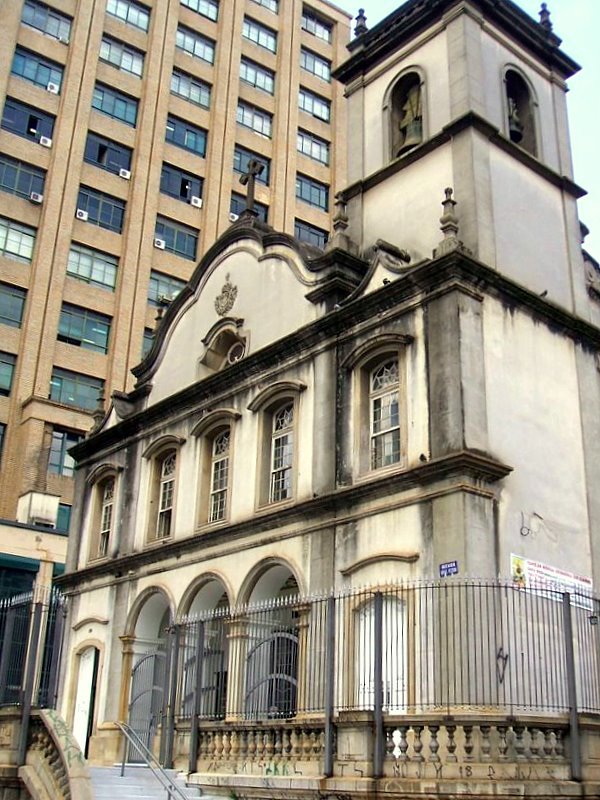
Igreja da Ordem Terceira do Carmo: Visiting Hours, Tickets, History, and Guide to São Paulo’s Historic Gem
Date of Publication: 14/06/2025
Introduction
The Igreja da Ordem Terceira do Carmo, nestled in São Paulo’s historic core, stands as a monument to over four centuries of religious, architectural, and cultural evolution. Founded in the late 16th century and shaped by the Carmelite presence since 1594, this church is not only an architectural treasure but also a living center of spiritual, artistic, and social life. Its legacy, marked by colonial, baroque, rococo, and eclectic influences, makes it an essential destination for travelers interested in history, architecture, and spirituality (Ordem Terceira, Wikipedia).
This guide provides detailed information about the church’s history, artistic highlights, visiting hours, accessibility, and practical tips to help you make the most of your visit.
Historical Overview
Origins and Foundation
The Carmelite order established its roots in São Paulo in 1594, with laypeople forming the Third Order (Ordem Terceira) shortly thereafter. This unique branch allowed non-clerical members to participate in Carmelite spirituality while maintaining their secular lives—a tradition that flourished in São Paulo’s colonial context (Ordem Terceira). The church’s foundations are intertwined with the city’s own development, growing from a small colonial settlement to Brazil’s bustling metropolis.
Architectural Evolution
Originally constructed using taipa de pilão (rammed earth), the church underwent numerous expansions and renovations reflecting the city’s changing fortunes and artistic tastes. The present structure, dating mainly from the 18th century, is renowned for its three-arched façade designed by the enslaved stonemason Tebas (Joaquim Pinto de Oliveira), whose work is increasingly recognized among São Paulo’s most important colonial contributions (Cronicas Macaenses). Later additions include elements of rococo and eclectic styles, especially visible in the ornate altars and interior decorations (Wikipedia, O Melhor de Sampa).
Religious and Cultural Significance
The church has long served as the spiritual home for São Paulo’s Carmelite lay community. Its liturgical calendar features events such as the Novena to Nossa Senhora do Carmo, drawing devotees from across the city (Ordem Terceira). Historically, the church hosted significant religious processions and remains a site of deep Marian devotion and Carmelite spirituality.
Artistic Heritage
Inside, the church boasts a remarkable collection of colonial Brazilian art. Highlights include:
- Rococo Main Altar: Dedicated to Nossa Senhora do Carmo, flanked by statues of Santa Teresa d’Ávila and São João da Cruz (APECC).
- Ceiling and Chancel Paintings: Created by Frei Jesuíno do Monte Carmelo, whose works are considered masterpieces of colonial art (Wikipedia).
- Lateral Altars and Paintings: Featuring scenes from the Passion and works by José Patrício da Silva Manso and Manoel José Pereira.
Community and Social Engagement
Beyond its religious function, the church has been a hub for charitable works since its foundation, supporting vulnerable populations and maintaining a tradition of lay engagement in social outreach (Ordem Terceira).
Preservation and Recognition
The church is protected as a historical monument by IPHAN and CONPRESP, ensuring the ongoing conservation of its architecture and art (Wikipedia).
Architectural Highlights
- Façade: The simple exterior belies the richness within, with Tebas’s three-arched design forming a unique colonial landmark.
- Interior: Lavishly decorated with rococo altars, painted ceilings, and side chapels honoring Carmelite saints.
- Materials: Constructed with taipa de pilão, later reinforced and expanded with stone and modern materials during 20th-century restorations (Cronicas Macaenses).
- Artworks: The nave, chancel, and sacristy showcase works by Frei Jesuíno do Monte Carmelo, among others.
Visiting Information
Location and Access
- Address: Avenida Rangel Pestana, 230 – Sé, São Paulo – SP, 01002-010, Brazil (Buser)
- Transport: Close to Sé metro station (Lines 1 and 3), with nearby bus stops and easy taxi/rideshare access.
Opening Hours
- Mass Times: Monday to Friday at 12:15 PM; Saturday and Sunday at 9:00 AM.
- Visiting: Open to visitors before and after Mass times. For sightseeing, mornings and weekdays tend to be less crowded.
Tickets and Admission
- Entry: Free for all visitors and worshippers. Donations are welcomed to support church maintenance.
Accessibility
- Wheelchair Access: Available via the main entrance. Some historic areas may have limited accessibility.
- Facilities: Restrooms and ramps are provided where possible.
Services
- Confessions: Available before Masses; arrive early to participate (APECC).
- Guided Tours: Often arranged during special events or by request; audio tours are also available (São Paulo Audio Tour).
Visitor Etiquette
- Dress modestly.
- Photography is permitted but should be discreet, especially during services.
- Remain respectful of ongoing religious ceremonies.
Nearby Attractions
The church’s central location provides easy access to:
- Praça da Sé and São Paulo Cathedral
- Pátio do Colégio (site of the city’s founding)
- Solar da Marquesa de Santos
- Caixa Cultural São Paulo
- Sesc Carmo (cultural and leisure activities)
For a complete cultural experience, combine your visit with these nearby landmarks (Buser).
Frequently Asked Questions (FAQ)
Q: What are the visiting hours for Igreja da Ordem Terceira do Carmo?
A: The church is open for Mass Monday to Friday at 12:15 PM and Saturday/Sunday at 9:00 AM. Visitors are welcome before and after these times.
Q: Is there an entrance fee or ticket required?
A: No, entry is free. Donations are appreciated.
Q: Are guided tours available?
A: Yes, during special events or by prior arrangement. Audio tours are also offered.
Q: Is the church accessible for visitors with mobility issues?
A: Yes, most areas are accessible, but some historic features may present challenges.
Q: Can I take photos inside the church?
A: Generally yes, but please be respectful, especially during services.
Q: What nearby attractions should I visit?
A: Praça da Sé, São Paulo Cathedral, Pátio do Colégio, and the Solar da Marquesa de Santos are all within walking distance.
Safety, Preservation, and Recent Events
The church is well-protected by national and municipal heritage laws. Ongoing conservation efforts address challenges such as theft or environmental damage (CNN Brasil). Daytime visits are recommended, as the surrounding Sé district is livelier during daylight hours.
Enhance Your Visit
- Visuals: Look for high-quality images online or through the church’s official channels to enrich your understanding.
- Audio Tours: Download the Audiala app for curated guides and up-to-date event information.
- Events: Join special liturgical celebrations, especially the annual Novena to Nossa Senhora do Carmo.
Conclusion
The Igreja da Ordem Terceira do Carmo is more than a historical relic; it’s a living testament to São Paulo’s spiritual and cultural vitality. From its colonial origins and artistic treasures to its role as a center for community and worship, the church invites visitors to explore the layers of faith, history, and artistry that define Brazil’s largest city. Plan your visit to this extraordinary site and experience firsthand the enduring legacy of one of São Paulo’s most cherished religious and cultural landmarks.
Sources
- Ordem Terceira
- Ordem Terceira
- O Melhor de Sampa
- Wikipedia
- APECC
- Sanctuaria.art
- Cronicas Macaenses
- Buser
- CNN Brasil
